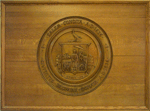Salem Fire: Difference between revisions
From Salem Links and Lore
No edit summary |
No edit summary |
||
| Line 22: | Line 22: | ||
[http://innopac.noblenet.org/search/t?searchtype=t&searcharg=locational+response+to+catastrophe&searchscope=24&SORT=D Locational Response to Catastrophe: the Shoe and Leather Industry of Salem, Mass. after the conflagration of June 25, 1914] Robert P. Donnell, 1976. | [http://innopac.noblenet.org/search/t?searchtype=t&searcharg=locational+response+to+catastrophe&searchscope=24&SORT=D Locational Response to Catastrophe: the Shoe and Leather Industry of Salem, Mass. after the conflagration of June 25, 1914] Robert P. Donnell, 1976. | ||
[http://innopac.noblenet.org/search/X?SEARCH=salem+rebuilding+commission&SORT=D&searchscope=24 Salem Rebuilding Commission] Report of ..., 1917 | |||
"Mind-boggling devastation; walk traces path of the 1914 Salem Fire" ''Salem News'', Sept. 10, 2008, p. 1 | |||
Revision as of 09:29, 16 April 2010
- The famous Salem Fire of 1914 was one of the largest fire in the history of Massachusetts. Burning about 253 acres or two square miles, the Salem blaze began in the early afternoon of June 25, 1914, at Korn Leather Co. factory at 55 Boston St. in the city's Blubber Hollow section of town. It spread to 20 factories, mostly used for leather-working. The wind pushed the fire toward south Salem, spreading to wooden residences and crossing the railroad tracks into South Salem.
- Thirteen hours later, after the fire had run its course, the damage was assessed: 20,000 homeless, 50 people injured, 1,000 buildings burned and total loss estimated at $12,000,000. Fifty-one streets were totally wiped out and 48 partially burned.
- The 200 children from the Orphanage on Lafayette Street were removed safely to Salem Willows, as were some of the patients from the hospitals, though some were take to Danvers Hospital.
- Forest River Park and Bertram Field were both used for relief camps. Bertram Field had 152 tents with 470 occupants while Forest River Camp accommodated 1,500 people in 400 tents. The Salem Militia and the Red Cross set up and ran these and other food relief efforts.
- One of the worst losses was St. Joseph's Church, a twin-towered structure on Lafayette street erected only a few years before the fire. They rebuilt the church in 1949.
See Also
The great Salem Fire of 1914: images from the Phillips Library collection Barbara Pero Kampas
The Salem Fire by Arthur B. Jones, 1914.
The Salem Fire Relief Montanye Perry, 1915
Fire Report: Naumkeag Steam Cotton Co. 1914
Report on the City Of Salem, Mass. National Board of Fire Underwriters, 1914.
Locational Response to Catastrophe: the Shoe and Leather Industry of Salem, Mass. after the conflagration of June 25, 1914 Robert P. Donnell, 1976.
Salem Rebuilding Commission Report of ..., 1917
"Mind-boggling devastation; walk traces path of the 1914 Salem Fire" Salem News, Sept. 10, 2008, p. 1
